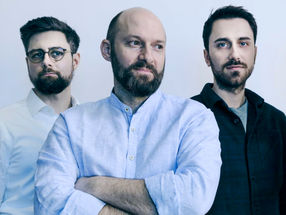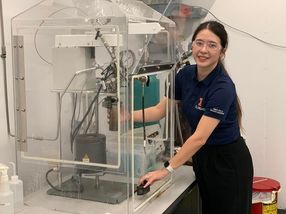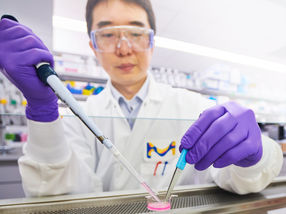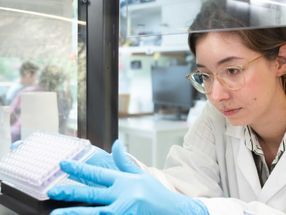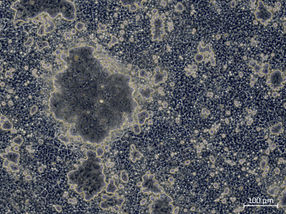How Does Aspirin Crystallize?
Two different crystalline forms of aspirin in intergrown domains
Advertisement
When you get a headache, you probably reach for aspirin. What is giving researchers a headache is the question of the crystal structure of aspirin. Is there another form on top of the long-known one? A team of scientists from Denmark, Germany, and India seems to have solved this controversial puzzle: yes, there is a second structure - but it does not exist as a pure form. "The two crystalline forms of aspirin are so closely related," explains the research team of Andrew D. Bond, Roland Boese and Gautam R. Desiraju in Angewandte Chemie, "that they form structures containing domains of both crystal types."
In 2004, computer calculations had indicated that while the long-known crystal structure of aspirin (form I) is definitely one of the most stable forms, another version might exist that is just as stable, though it had not yet been discovered - a clear challenge to researchers in the field. The difference between the proposed structures is slight: both have identical layers containing molecules grouped into pairs, but these layers are arranged differently in the two different structures. In 2005, researchers in the USA announced the discovery of the predicted structure (form II). But was this merely an artifact?
"We can now clear this matter up," say Bond, Boese and Desiraju, after very careful examination of aspirin crystals. "Aspirin has a tendency to crystallize with an unusual intergrown structure. The same single crystal contains domains with both arrangements lying side by side." The distribution and ratio of the domains are variable but limited. Whereas a pure form I exists, it has so far only been possible to obtain crystals containing a maximum of 85 % form II. The ratio of the two domains within crystals produced under identical conditions seems to be roughly constant.
This discovery upends fundamental principles and requires new concepts: chemists previously understood "polymorphism" to mean that a molecule can take on one or another packing arrangement in the crystalline state; a single crystal of a specific chemical substance is either one polymorph or the other. Aspirin is the first case in which two different "polymorphic" structures exist in one single crystal. So is aspirin polymorphic or not? Should the definition of polymorphism be updated? Such questions are not just philosophical in nature, but could have tangible implications in patent law, because each polymorph of a compound is viewed as a separate patentable substance.
Original publication: Roland Boese et al.; "On the Polymorphism of Aspirin"; Angewandte Chemie International Edition 2007, 46, No. 4, 615-622.
Most read news
Other news from the department science

Get the chemical industry in your inbox
By submitting this form you agree that LUMITOS AG will send you the newsletter(s) selected above by email. Your data will not be passed on to third parties. Your data will be stored and processed in accordance with our data protection regulations. LUMITOS may contact you by email for the purpose of advertising or market and opinion surveys. You can revoke your consent at any time without giving reasons to LUMITOS AG, Ernst-Augustin-Str. 2, 12489 Berlin, Germany or by e-mail at revoke@lumitos.com with effect for the future. In addition, each email contains a link to unsubscribe from the corresponding newsletter.



























